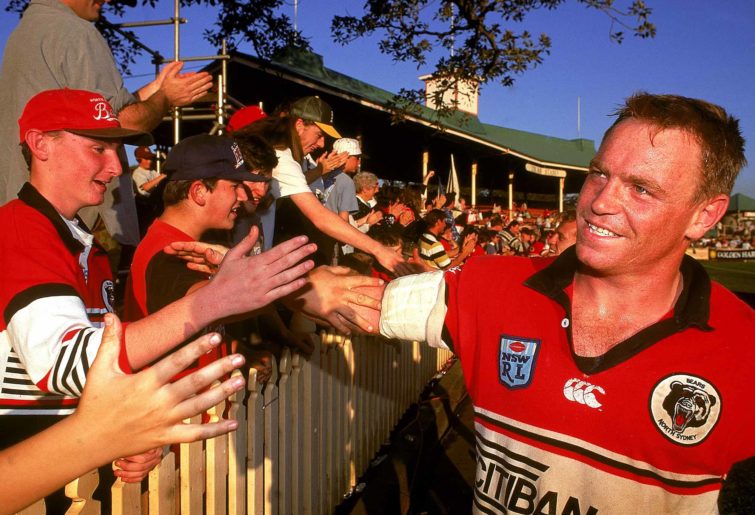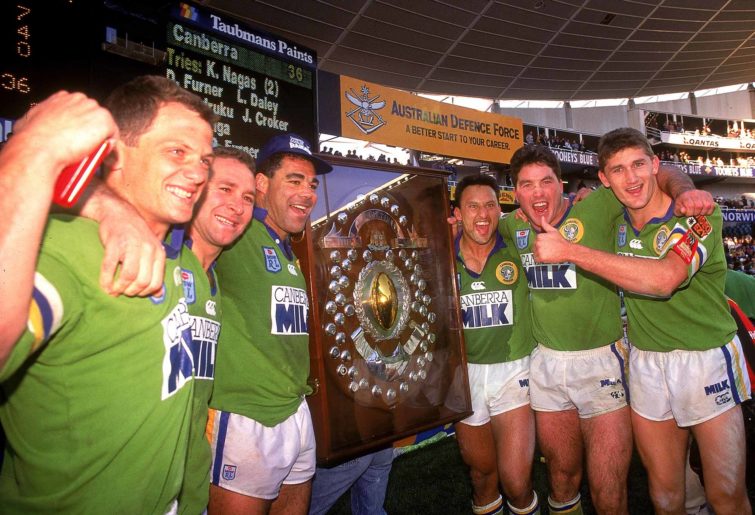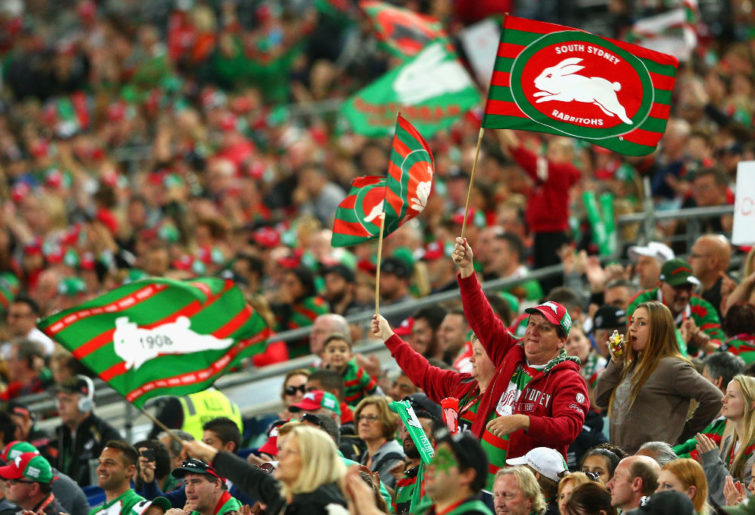After days of controversy regarding the 2020 season campaign, the NRL quietly re-cut the two-minute ad.
So what have they removed?
Latrell Mitchell wearing the Aboriginal flag?
Karina Brown and Vanessa Foliaki kissing?
Or the fleeting moment showing Macklemore performing at the 2017 grand final?
Nope, they’re all still in there.
Rather, the offending shot that was removed – or at least re-jigged – was the Trbojevic brothers ‘playing’ against one another in 1996 as a TV news bulletin announces “the Super League war tears the code apart”.
As more than a few pointed out, Tom Turbo was born in October 1996, so his efforts playing this game of backyard footy are pretty bloody special – even for a freak like the Manly fullback.
Thus, the shot has been adjusted so that it’s now taking place in 1997 (he’s still showing some impressive skills for a one-year-old) and instead of an audio backdrop of the code being torn apart, we now hear the TV news announce “ARL and Super League unite today to form the NRL”.
It’s probably a smart move – better to focus on the unity of the code rather than the fissure that almost ruined rugby league in Australia.
But it also got me thinking about the way we remember Super League.
The old saying goes that history is written by the victors and while the NRL was formed as a 50-50 partnership, there’s still a pervading sense that the ARL ‘won’ the war.
Maybe that’s just the Novocastrian in me. Maybe there’s a different perspective in parts of the world where Super League was king.
But here in Newcastle, the Knights continue as one of the best supported clubs in the game, while the Hunter Mariners lasted one season and, as Mariners halfback Brett Kimmorley told the Our Town Our Team podcast, “There was some hatred up there against us, we didn’t have a very big fan base, and we had players that had travelled from all over the world to come play in Newcastle.”
So, again, maybe the story as I recall it doesn’t ring true the country over – I’d be really interested to hear the narrative told in Brisbane – but from where I sit, the story is that a greedy fatcat wanted sporting content for his burgeoning pay-TV network and almost destroyed the greatest game of all with his efforts.

The North Sydney Bears. Definite losers of the Super League war. (Photo by Getty Images)
Of course, it’s pretty hard to paint your side as the ‘good guys’ when the fatcat in question running your efforts is Rupert Murdoch.
So when rugby league was brought back together under the banner of the NRL – which is just one letter removed from the ARL competition we previously had, and is now under the stewardship of the Australian Rugby League Commission – it certainly felt like the ARL were the ultimate winners.
However, some 25 years down the road, it’s hard to really see that either of the ARL or Super League ‘won’ the war.
The game is now run by completely different people to the main combatants of the ‘90s – in fact, getting the likes of John Ribot to resign was part of the peace deals that took place after that one fractured season.
And while Fox Sports broadcasts every game, Nine still gets first bite in selecting the matches it wants to televise, while also maintaining exclusive access to the biggest events of the year – Origin and the grand final.
Of course, the next TV rights could see all that change, although the advent of streaming and the internet in general are monumental shifts in the landscape that no one in the ‘90s could have foreseen.
Nevertheless, the way I see it, two winners emerged from the Super League war – and neither of them were the governing bodies.
Firstly, the players are infinitely better off.
The posters on my wall as a kid had each player’s basic info, including their day job. There were probably three or so guys in the team who listed ‘professional footballer’ as their gig, with the rest of the squad actually putting in some version of a nine-to-five to make ends meet.

How many of these Raiders legends had a day job? (Photo by Getty Images)
This was in the early ‘90s – granted, that’s going on 30 years ago, but it’s still mind-blowing that athletes who played in front of tens of thousands of people every week and were regularly on TV couldn’t earn a living wage from their sport.
Some think professional athletes are overpaid these days but if your code makes billions from TV revenue, then the stars who the general public tune in to watch deserve to make bank.
And that brings us to the other major winners of the Super League war: the TV-watching public.
These nine-figure broadcast deals are reliant upon eight first-grade matches being shown live on TV each week. Prior to the Super League war, this was a fantasy.
Channel Nine showed a Friday night and Sunday afternoon game, while the ABC showed 60 minutes of highlights from the Saturday afternoon game.
How crazy is that – our woefully underfunded public broadcaster used to have almost a third of the weekly rugby league content!
Compare that to this weekend, which starts on Thursday night, wherein plenty of people will settle in to watch eight entire games of footy, all totally live.

(Photo by Cameron Spencer/Getty Images)
Before Super League, that was a complete pipe dream.
Look, I’m sure Fox Sports and Channel Nine make plenty of money from it all. And Rupert Murdoch certainly hasn’t got poorer as a result of his foray into rugby league.
But when I think of the winners of the Super League war, I think of athletes who can retire – if they’re smart – well set for the second act of their lives, as well as people like you and me, who get to watch every game live and for a relative pittance compared to the cost of a season ticket.
The real winners of the Super League war? Us!































































































